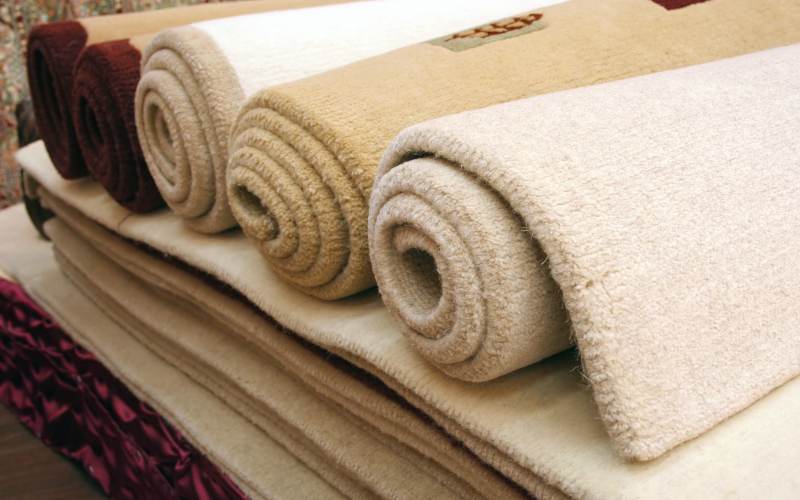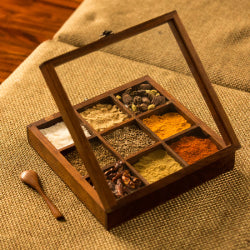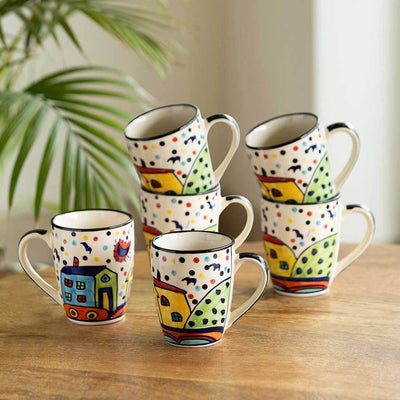Weaving Stories – The History of Dhurries
Ask any interior design expert and you shall learn that attention to flooring is one of the first steps towards flawless home décor. A carpet or rug can effortlessly tie together all the elements of your room and add seamless elegance. A dhurrie does the same.
Dhurries can be considered a form of a carpet or a rug that is essentially thicker and is woven using thicker yarns, imparting durability. India's textile legacy has long been appreciated for its natural use of colour, pattern, and design features that capture the spirit of the continent's nature and history. Dhurries are one such element that embodies Indian culture and have helped spread it throughout the world.
Since olden times, dhurries have been used for a variety of reasons and not just as flooring. Silk and exquisite cotton dhurries often found a place as bedcovers in palaces and houses of the wealthy. Cheaper dhurries were the common man's saviour – used as package covers for travel, shelter for freezing nights and as bedding too.
Today, these dhurries adorn modern houses as elegant décor pieces, bringing to the room a touch of elegance.
Origin of Dhurrie-weaving
This craft of dhurrie-weaving dates back centuries ago. Dhurries originated in India and neighbouring countries such as Burma, Pakistan, and Afghanistan. Dhurries were traditionally used as floor mats, as covers for beds, as wall hangings, and as mats for meditation and yoga. Dhurrie may be produced from a variety of materials with varying degrees of strength, softness, and texture. Some are smooth and cold to the touch, while others are soft and warm. Wool, silk, and cotton are common materials for handwoven dhurries, as are bamboo silk, banana leaf, mohair, merino, and alpaca.
Dhurrie-weaving has evolved to become one of those rich traditions in India that not only embody Indian ethos but also provide a livelihood to many villagers. This generational craft has been passed down from heir to heir and kept alive through the nimble fingers of the weavers. Traditional designs and techniques have also been passed down through generations.

The Technique of the Craft
Dhurrie weaving involves the use of a loom machine for weaving. Many techniques vary from region to region even when it comes to using the loom.
Pit looms that involve the use of the weaver's feet to operate the loom, Panja dhurries that are made with the help of a 'panja' which is a claw-like tool used to weave the wefts of yarn and other handlooms are the most common methods of weaving dhurries.
Originally, traditional colours like flaming orange, indigo, crimson and green were the most common hues used to make dhurries. These colours often depicted the weavers' own culture – inspired by their vibrant sarees, turbans and traditional attires.
Today, more contemporary shades have also become a part of the weavers' colour palettes.
Geometric patterns and stripes are the most common designs. Other design inspirations include local architecture, trees of life, medallions of battle and even birds and blooms.
Some motifs prove to be very complex and can take many days to complete. The skills of a weaver are often judged by the complexity of motifs he or she weaves.

Authentic Dhurries and Where to Buy Them
Dhurrie weaving is a complex and time-consuming craft. The best and rarest dhurries can take up to 15 days to be made, depending on size, material and patterns.
Dhurries sourced directly from the weavers are the best way to get your hands on these masterpieces.
Consider buying either directly from weaver-clusters or home-grown brands like ExclusiveLane to ensure that the weavers are given fair wages.
International brands tend to buy in bulk orders, grossly underpaying artisans and profiting off the sales without paying the artisans fairly.

Check Out ExclusiveLane's Dhurries
Sourced directly from traditional weavers in Rajasthan, ExclusiveLane's collection of Panja Dhurries is sure to be every rug lover's delight.
The 'Panja Dhurries of Rajasthan' is a collection inspired by the ages-old, traditional handloom craft of dhurrie-weaving. The legacy of this craft of the bygone era is still kept alive through the nimble fingers of masterful weavers in Rajasthan.
''Panja'' is a peculiar claw-like tool that is used on the loom machine to weave the weft, hence coining the name 'Panja Dhurries'.
Rare and expensive, a single panja dhurrie can take up to 15 days to be woven and perfected. Adorning brilliant colours, the most common designs on the dhurries include the quintessential stripes and geometric patterns.
Paying homage to the heritage of panja weaving, the 'Panja Dhurries of Rajasthan' collection brings to you magnificent panja dhurries crafted with utmost skill - where each thread sings a story of Indian culture, keeping this forgotten craft alive. Crafted by skilled weavers from Rajasthan, these Panja Dhurries have been handwoven with the finest quality of wool.
The collection features exquisite Panja Dhurries in refreshing and classic colours depicting traditional stripes and minimalistic and sophisticated geometric motifs. These Panja Dhurries are perfect for your living rooms, bedrooms and patios – adding an element of cultural beauty to your home spaces.
They are also an excellent gift for your loved ones for housewarmings and the festive season, to adorn their house with a beautiful piece of heritage.






Leave a comment